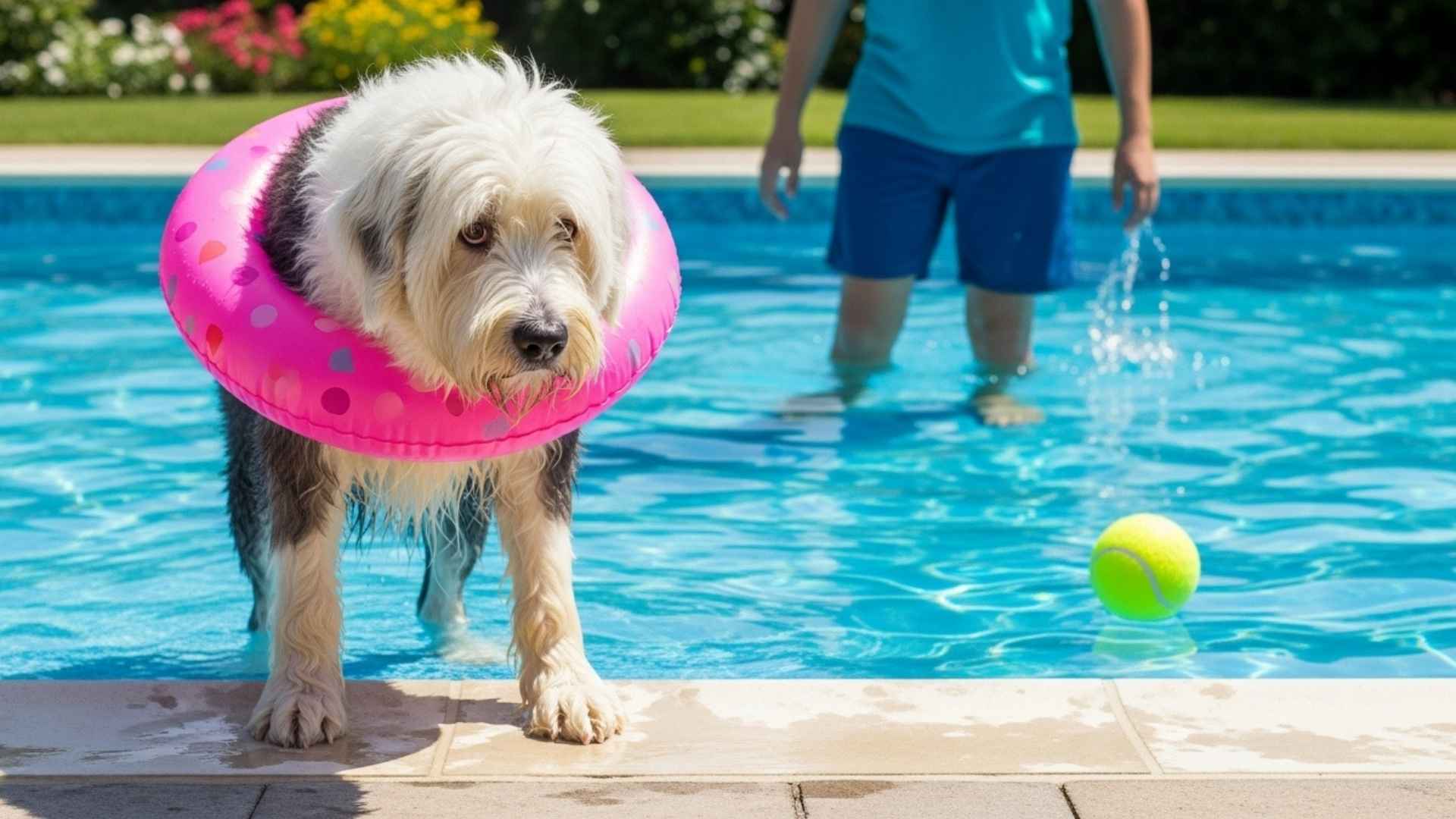Have you noticed how some dogs tire quickly while swimming, even in shallow water? Certain dogs face physical challenges that make staying afloat difficult, and they often find deep water or swimming pools stressful.
Dogs with flat faces, short snouts, and heavy, barrel-shaped bodies can struggle to paddle efficiently. Their compact frames and dense bone structures cause them to tire quickly, making long swims risky.
Similarly, dogs with disproportionately short legs or long bodies may paddle ineffectively, which increases the likelihood of exhaustion in the water. Even small dogs or those with dense coats may struggle to enjoy water activities, especially when left unattended.
For pet parents, taking necessary safety measures is crucial. Supervising swims, sticking to shallow water, and using a properly fitted life jacket or life vest ensures their furry friends stay safe and reduces the risk of accidents.
Worst Dog Breeds For Swimmers
1. Bulldogs
Why Bulldogs Struggle in Water
Bulldogs are a classic example of a brachycephalic breed, with a flat face, short snout, and barrel-shaped body. These physical traits interfere with swimming abilities, as they tire quickly and struggle to stay afloat.
Their dense bodies and pushed-in noses can cause breathing difficulties, especially during exercise or long swims.
According to the AKC, hot weather increases the risk, as Bulldogs can overheat easily. Stairs, deep pools, and unsupervised water play present major safety hazards. Even shallow water can be risky if they paddle too much or accidentally inhale water.
Safety Tips for Bulldogs
If you want your Bulldog to enjoy the beach or pool, always supervise closely and stick to very shallow water. A properly fitted life vest helps them stay afloat and reduces strain.
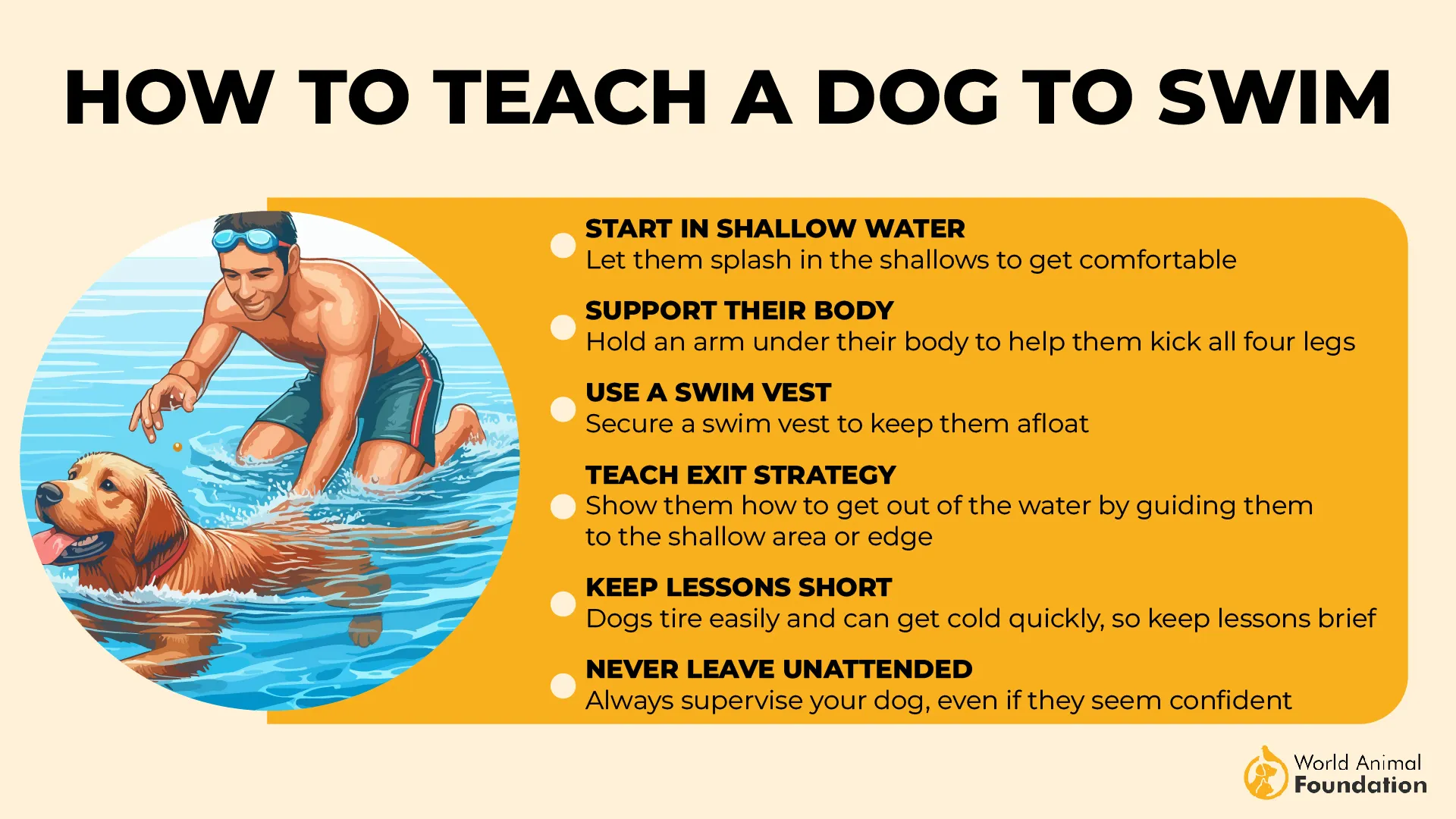
Limit swim sessions, watch for signs of distress, and avoid deep water to keep your brachycephalic breed safe and comfortable while having fun.
2. Pugs
Why Pugs Struggle in Water
Despite their charming appearance, Pugs are naturally not good swimmers. Their flattened faces, short muzzles, and sturdy, compact frames make paddling inefficient and keeping their noses above water challenging.
Their dense, heavy bodies reduce buoyancy, causing them to tire easily and increasing the risk of accidents in pools or open water.
Pugs are one of the worst swimmers because they often need to tilt their heads back to breathe properly. This shifts their posture into a vertical position, making movement in the water less effective.
Even wading in shallow water can be stressful, particularly when they exert themselves or become excited. Narrow nostrils and elongated soft palates can obstruct airflow, adding to the struggle of staying afloat safely.
Safety Tips for Pugs
Owners should never leave Pugs unsupervised near water. Wearing a life vest can support buoyancy and confidence. Limiting water sessions, sticking to shallow areas, and watching for signs of distress keep these brachycephalic dogs safe.
In hot weather or humid days, it’s better to keep them indoors in an air-conditioned area, avoiding strenuous swimming and reducing the risk of overheating.
3. Chihuahuas
Why Chihuahuas Struggle in Water
Chihuahuas are tiny dogs with delicate frames, making them poorly suited for swimming. Their short legs and compact bodies reduce propulsion, causing them to tire quickly. Even shallow water can feel overwhelming, as their small bodies and short legs make staying afloat challenging.
Another major challenge is their cautious and easily startled nature. Chihuahuas can panic in the water, which may lead to dangerous situations. Cold water worsens the problem, as this breed has a low tolerance for chilly water and can become chilled in just a few moments.
Safety Tips for Chihuahuas
Pet parents should never leave Chihuahuas unsupervised near water. Wearing a life jacket and sticking to very shallow areas keeps them safe. Introduce water slowly, avoid rough currents, and keep sessions short.
Dry them promptly after any contact with water and stay calm to help your tiny dog feel secure while near pools or beaches.
4. Dachshunds

Why Dachshunds Struggle in Water
Dachshunds are lively little dogs with short legs and elongated bodies, often nicknamed “wiener dogs.” While energetic and agile on land, these traits don’t help them in water.
Their long, compact frames make it hard to move through water efficiently, causing them to become exhausted quickly. Even low-depth areas can pose a real danger for this small breed.
According to Purina, originally developed in Germany over 300 years ago to hunt badgers, Dachshunds were bred for digging and agility rather than swimming. Their short legs and limited buoyancy mean that even near-surface water can tire them rapidly.

Unlike brachycephalic breeds, they don’t face breathing issues, but poor stamina still increases the risk of drowning in minimal-depth water.
Safety Tips for Dachshunds
Take necessary precautions, like keeping Dachshunds within arm’s reach around any water to prevent accidents and provide a small ramp or steps for safe entry and exit.
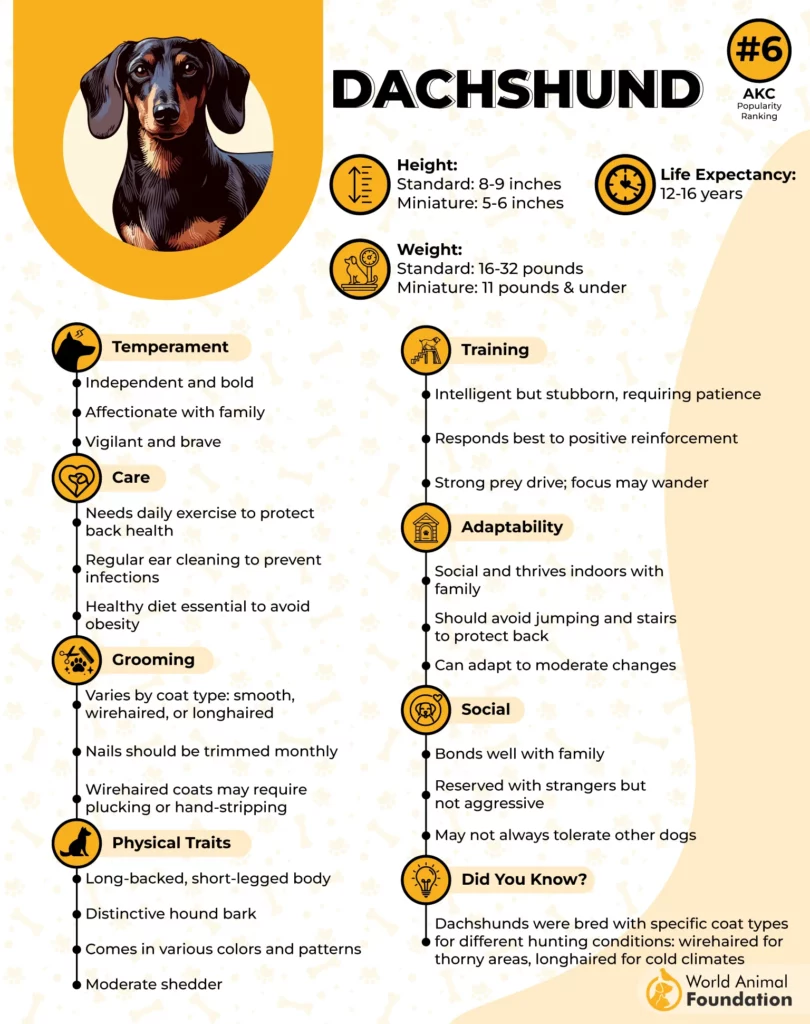
Introduce water gradually, use yard sprinklers or shallow paddling areas, keep sessions short, and avoid slippery surfaces to help your spirited little dog enjoy water safely.
5. Basset Hounds
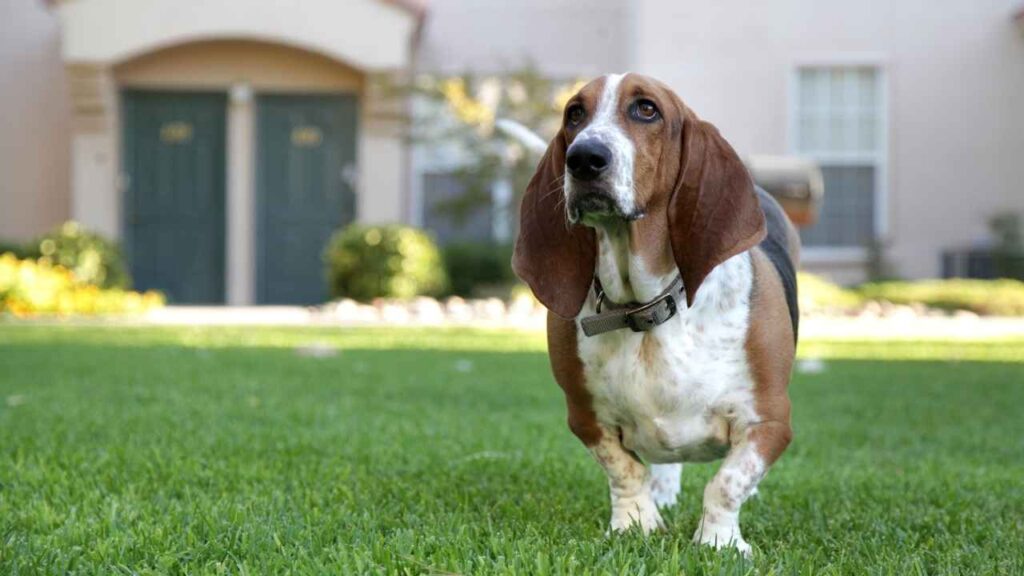
Why Basset Hounds Struggle in Water
Basset Hounds are medium-sized, heavy dogs with short legs, long bodies, and large, droopy ears.
While agile on land, these traits make swimming extremely difficult. Their dense bone structure and stocky frame reduce buoyancy, so even minimal-depth water can quickly tire them and increase the risk of drowning.
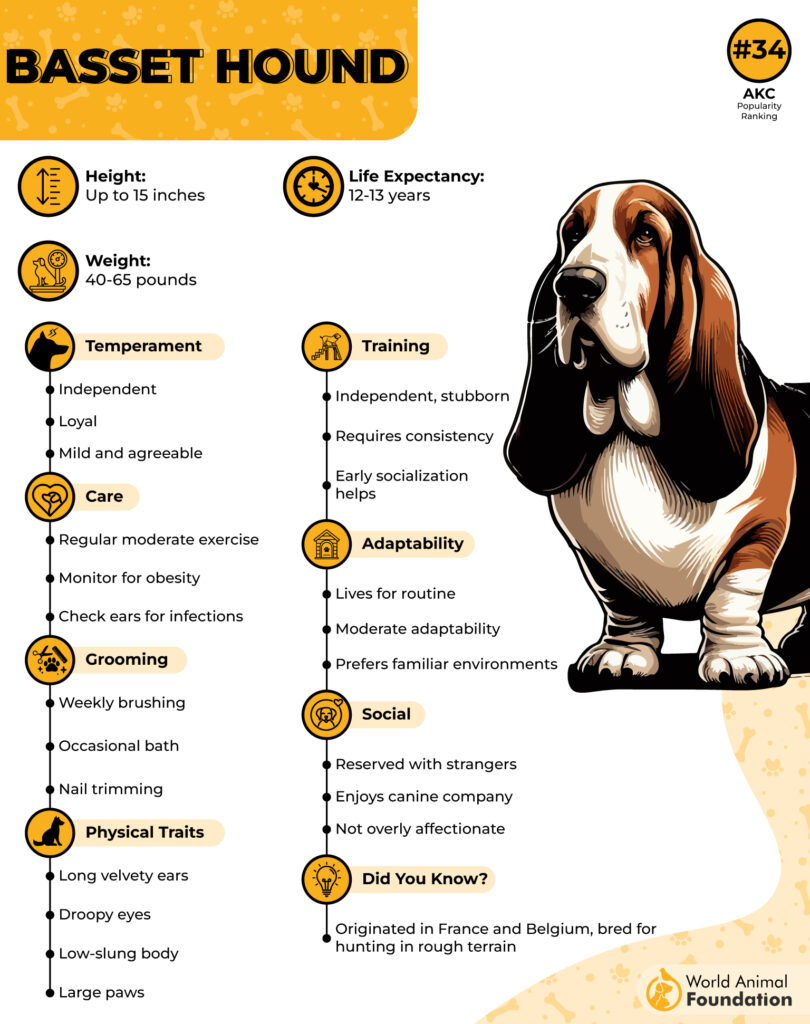
The breed’s long, floppy ears are also prone to trapping water, creating a perfect environment for yeast and bacterial infections. Large heads combined with short legs make paddling inefficient, requiring extra effort just to stay afloat.
According to Britannica, while they love outdoor activities like sniffing trails or playing in the yard, water sports are not suitable for this breed.
Safety Tips for Basset Hounds
Limit all water activities to supervised play in very shallow areas, and ensure ears are thoroughly dried afterward. Use non-slip surfaces and controlled wading zones to keep your Basset Hound safe while allowing gentle, land-friendly water play.
6. Pembroke Welsh Corgi
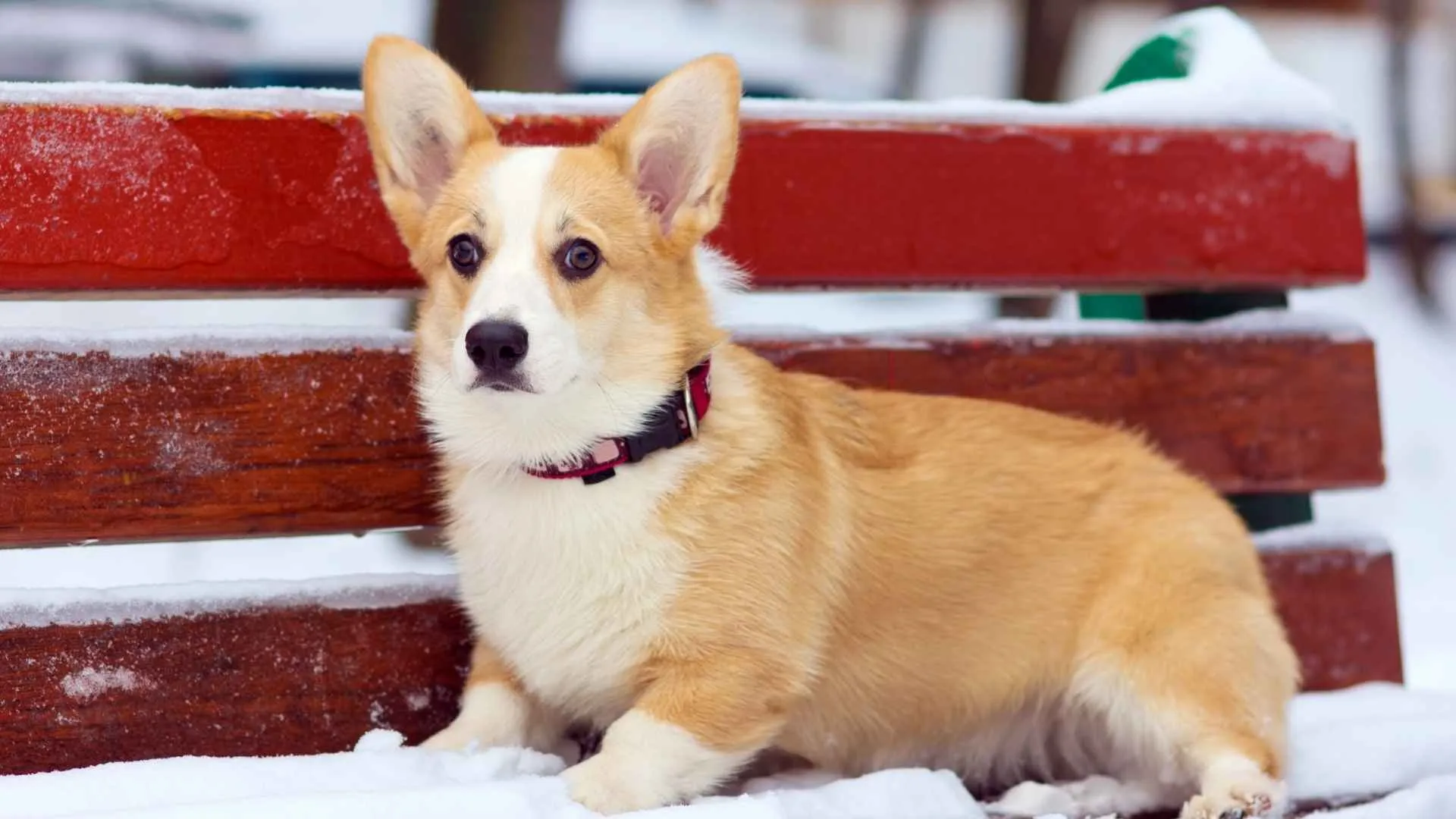
Why Corgis Struggle in Water
Although sturdy and energetic, Corgis’ body proportions prevent them from gliding easily through water. Their elongated bodies, barrel-shaped chests, and little legs reduce buoyancy, making it hard to maintain a stable paddling position.
Due to these physical limitations, the Pembroke Welsh Corgi can even face challenges in shallow water as well.
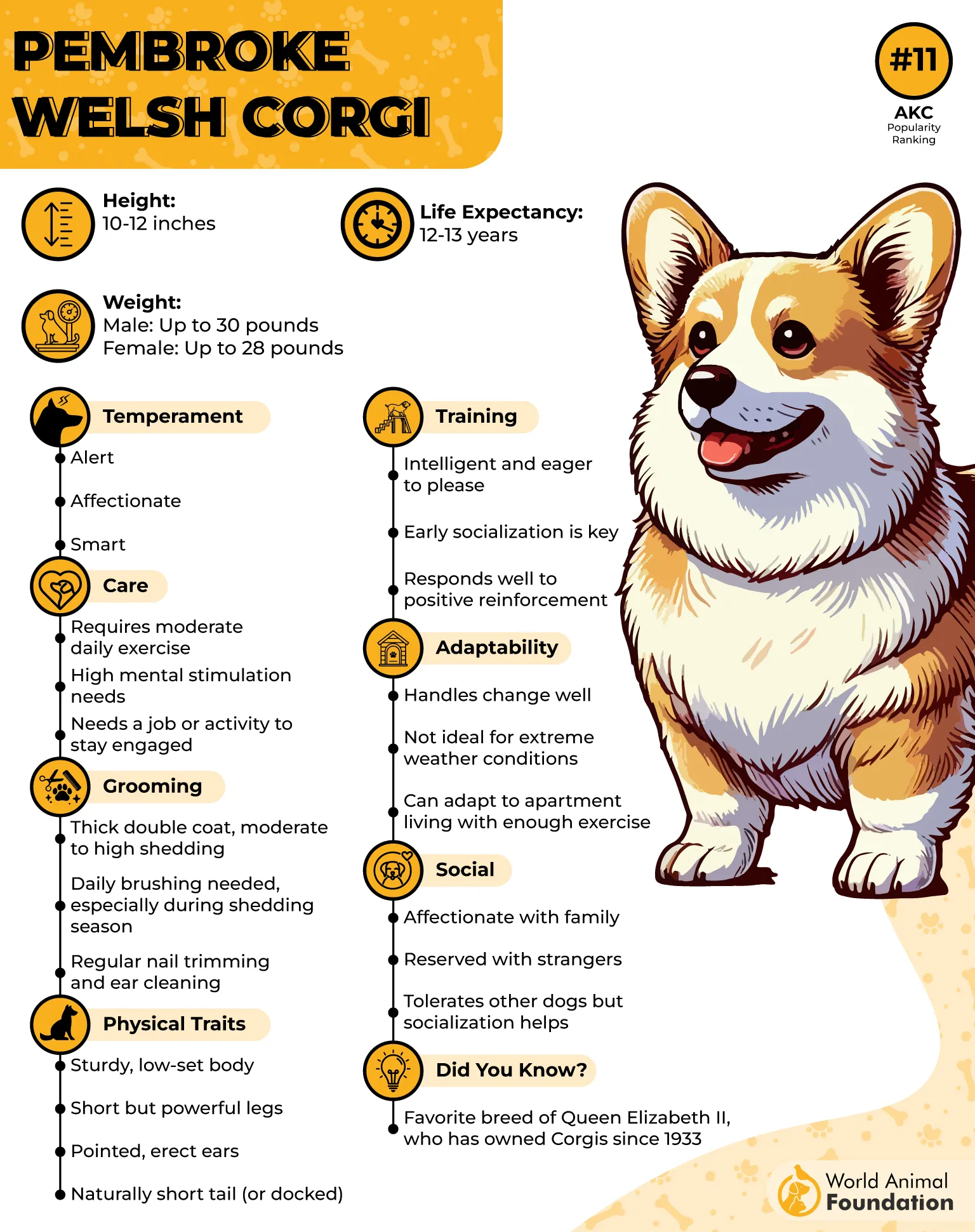
Originally bred to herd sheep and cattle, Corgis are confident and athletic, which might make them think they can handle water. However, their dense frames require extra effort to stay afloat, and prolonged swimming can exhaust them rapidly.
Safety Tips for Corgis
Encourage gentle wading or splashing in shallow pools rather than full swimming. Keep poolside surfaces non-slip, introduce water gradually, and limit playtime to short sessions to prevent fatigue.
A pet-friendly ramp or steps can help them enter and exit safely, and always dry them thoroughly afterward to protect their skin and coat.
7. Shih Tzus

Why Shih Tzus Struggle in Water
Shih Tzus are tiny, compact dogs with stubby legs, pushed-in faces, and luxuriant, dense coats. Their thick fur can become waterlogged, adding weight and resistance that makes staying buoyant challenging.
The breed’s flattened snout complicates breathing while paddling, and even shallow water can quickly exhaust them. Their cautious, nervous nature may also trigger panic, significantly increasing the risk of drowning.
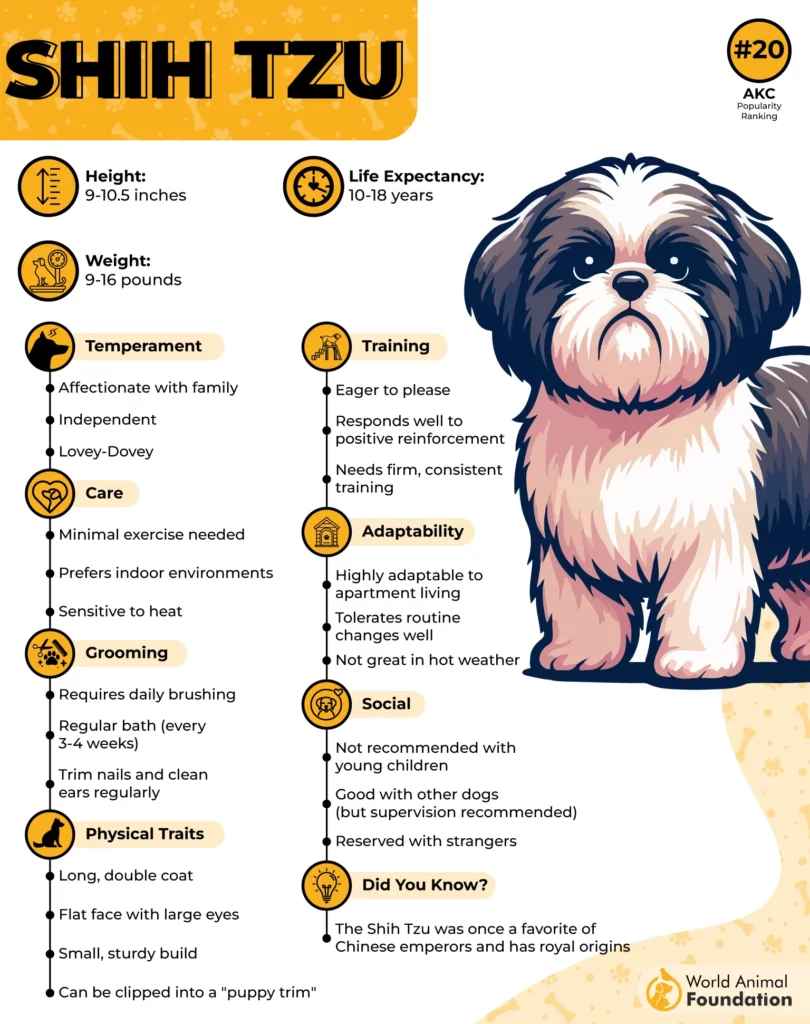
Although Shih Tzus might instinctively try to paddle, their body structure and low stamina make swimming a stressful activity rather than an enjoyable one. They are better suited to land-based play or gentle splashing in controlled, shallow areas.
Safety Tips for Shih Tzus
Never force a Shih Tzu into deep water. Allow wading in shallow zones, use a canine life vest if needed, supervise closely for signs of fatigue or distress, and dry their coat thoroughly afterward to prevent skin irritation.
Conclusion
While swimming may seem like a fun, refreshing activity for many dogs, not every breed is cut out for it. Breeds with short legs, flat faces, or dense bodies often face real challenges in staying buoyant and breathing comfortably in the water. For them, paddling isn’t play—it’s hard work.
That doesn’t mean these pups can’t enjoy time by the pool or beach. With extra precautions—like using a life jacket, offering shallow wading areas, and providing close supervision—they can still safely enjoy being near water.
Ultimately, understanding your dog’s physical limits helps prevent accidents and ensures they have positive experiences, whether they’re splashing their paws in a kiddie pool or lounging comfortably on dry land.
Every breed has its strengths—and for some, that strength is staying dry and cozy while you do the swimming


